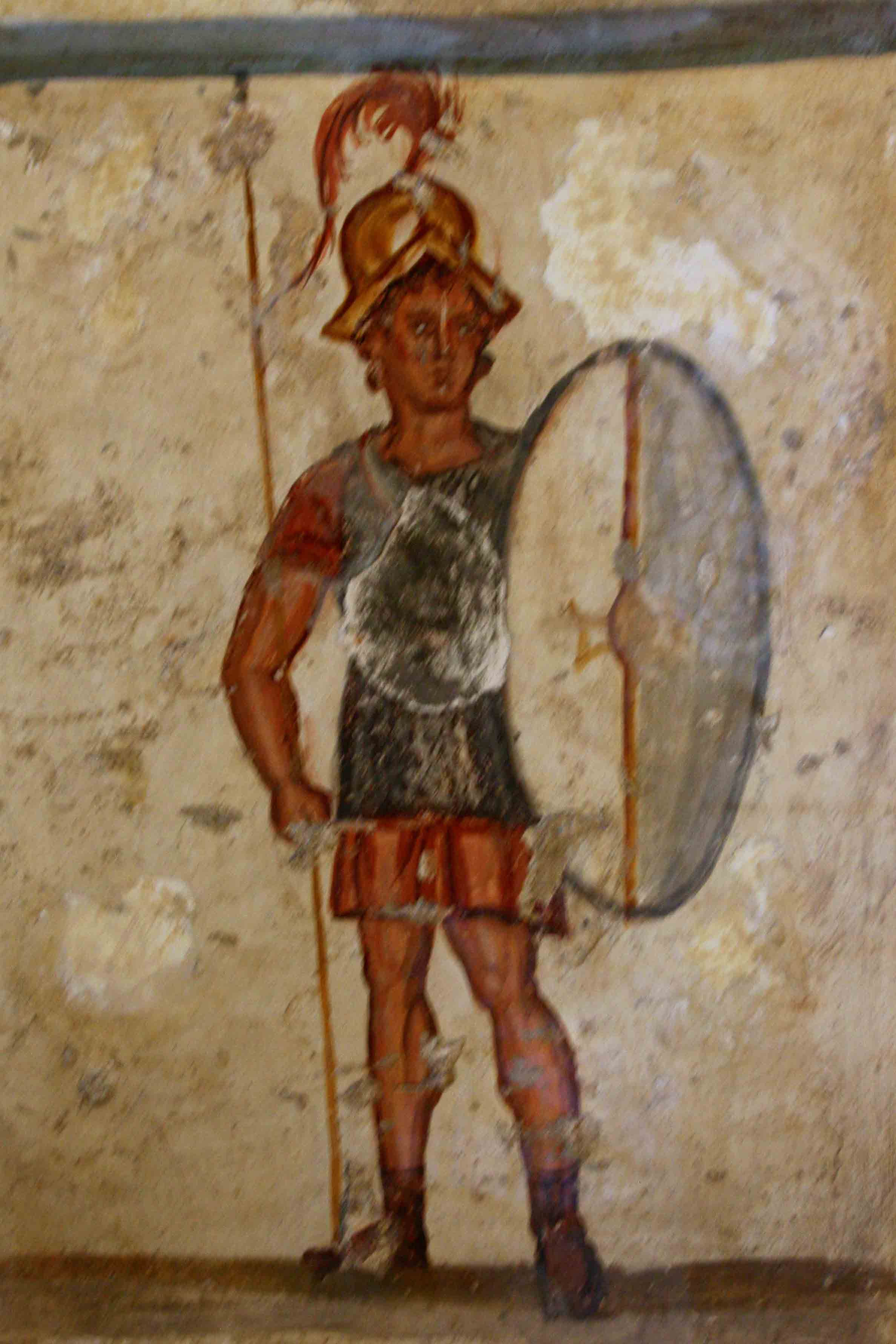Thyreos on:
[Wikipedia]
[Google]
[Amazon]
 A thyreos ( grc, θυρεός) was a large oval
A thyreos ( grc, θυρεός) was a large oval
 A thyreos ( grc, θυρεός) was a large oval
A thyreos ( grc, θυρεός) was a large oval shield
A shield is a piece of personal armour held in the hand, which may or may not be strapped to the wrist or forearm. Shields are used to intercept specific attacks, whether from close-ranged weaponry or projectiles such as arrows, by means of a ...
which was commonly used in Hellenistic
In Classical antiquity, the Hellenistic period covers the time in Mediterranean history after Classical Greece, between the death of Alexander the Great in 323 BC and the emergence of the Roman Empire, as signified by the Battle of Actium in ...
armies from the 3rd century BC onwards. It was adopted from the Galatia
Galatia (; grc, Γαλατία, ''Galatía'', "Gaul") was an ancient area in the highlands of central Anatolia, roughly corresponding to the provinces of Ankara and Eskişehir, in modern Turkey. Galatia was named after the Gauls from Thrace (c ...
ns, probably first by the Illyrians
The Illyrians ( grc, Ἰλλυριοί, ''Illyrioi''; la, Illyrii) were a group of Indo-European languages, Indo-European-speaking peoples who inhabited the western Balkan Peninsula in ancient times. They constituted one of the three main Paleo ...
, then by the Thracians
The Thracians (; grc, Θρᾷκες ''Thrāikes''; la, Thraci) were an Indo-European languages, Indo-European speaking people who inhabited large parts of Eastern Europe, Eastern and Southeast Europe, Southeastern Europe in ancient history.. ...
before becoming common in ancient Greece
Ancient Greece ( el, Ἑλλάς, Hellás) was a northeastern Mediterranean civilization, existing from the Greek Dark Ages of the 12th–9th centuries BC to the end of classical antiquity ( AD 600), that comprised a loose collection of cult ...
. Troops who carried it were known as thyreophoroi
The ''thyreophoroi'' or ''thureophoroi'' ( el, θυρεοφόροι; singular: ''thureophoros''/''thyreophoros'', θυρεοφόρος) were a type of infantry soldier, common in the 3rd to 1st centuries BC, who carried a large oval shield called a ...
. It was made of wood covered with leather and had a spined boss. It was carried using a central handgrip. Some variants of the shield were nearly rectangular: the name thyreos derives from the word ''thyra'' (θύρα), "door", reflecting its oblong shape.
See also
*Hellenistic armies
The Hellenistic armies is the term applied to the armies of the successor kingdoms of the Hellenistic period. The Hellenistic armies emerged after the death of Alexander the Great, when his vast empire was split between his successors, also know ...
* Antigonid Macedonian army
The Antigonid Macedonian army was the army that evolved from the ancient Greek kingdom of Macedonia in the period when it was ruled by the Antigonid dynasty from 276 BC to 168 BC. It was seen as one of the principal Hellenistic fighting force ...
References
{{reflist Ancient Greek military terminology Greek shields